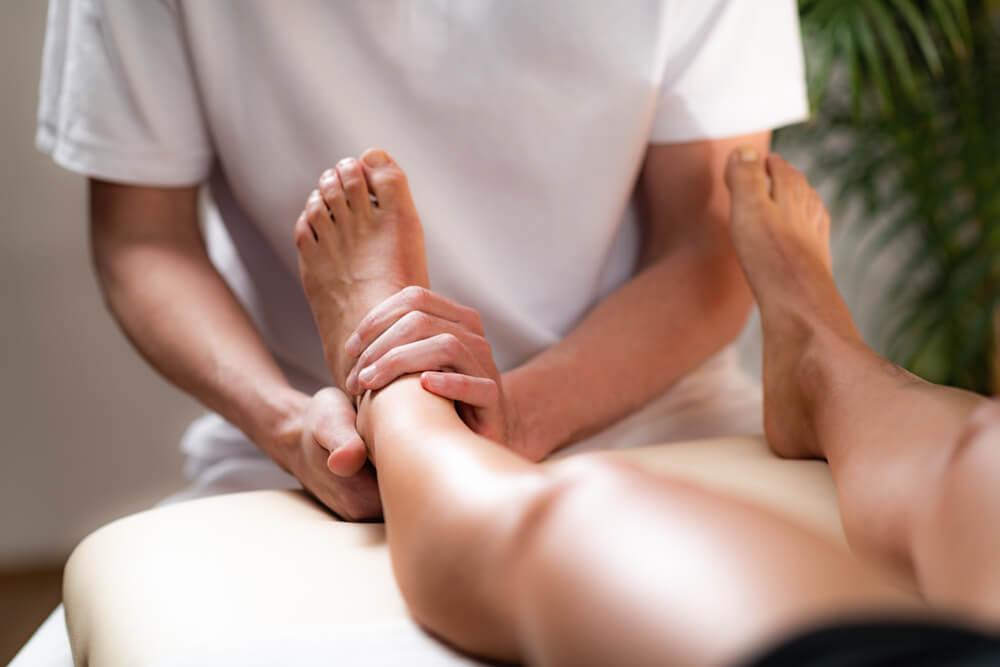Did you know that there are more than 200 bones and 600 muscles in an adult’s body? The human body is made up of so many different parts, and a majority of those parts make up your musculoskeletal system. This system consists of your bones, muscles, joints, tendons, ligaments and nerves. The musculoskeletal system is what allows your body to do every type of movement, from walking across the room to strenuous workouts.
When your musculoskeletal system gets damaged and your mobility is affected, orthopedic physical therapy is your answer. But what does it actually treat? That’s what we’re here to answer.
Read on to learn about the basics of orthopedic physical therapy, what it treats and different types of techniques.
What is orthopedic physical therapy?
Orthopedic physical therapy improves the quality of your bones, muscles, joints, tendons, ligaments and connective tissue that may be impacted by an injury, medical condition or surgery.
An orthopedic physical therapist sees how your neurological and cardiovascular systems work with your musculoskeletal system. That way they can ensure that the pain or injury is properly treated and that your mobility is improved.
An orthopedic physical therapist can diagnose the cause of your symptoms. With the right diagnosis, they can determine an effective treatment plan. They will even teach you how to care for your body in the future to help prevent further injury or worsening medical condition symptoms.
10 musculoskeletal issues that orthopedic physical therapy treats
Many bodily injuries and medical conditions affect or stem from the musculoskeletal system. There’s a vast list of conditions and issues that an orthopedic physical therapist can treat. It can be used as either a primary or complementary option.
Here are 10 injuries and medical conditions that can be treated by an orthopedic physical therapist:
- Arthritis.
- Bursitis.
- Frozen shoulder.
- Knee instability.
- Joint pain.
- Lower back pain.
- Lymphedema.
- Plantar fasciitis.
- Scoliosis.
- Spinal stenosis.
Orthopedic PT can also be used after surgeries to manage your pain, help prevent scar tissue and restore your mobility.
5 orthopedic physical therapy treatments
There are a wide variety of treatments that are used in orthopedic physical therapy, including modalities, exercises and hands-on techniques. The type of treatments that a physical therapist will use varies based on your condition, the severity of your symptoms and your physical capabilities.
Five of the most common orthopedic physical therapy treatments are:
- Kinesiology taping — A highly flexible and stretchy fabric called kinesiology tape is placed on affected areas and used as a pulling force to provide therapeutic pressure during movements. It improves blood circulation to alleviate pain and reacts to body heat to ensure that the tape stays in place. It’s often used for sports injuries, but may also be beneficial for neck, back and knee pain.
- Electrical stimulation — Small electrical currents can stimulate your nerves to alleviate pain, enhance local circulation and reduce muscle spasms. There are a variety of different currents that can be used in electrical stimulation, and your physical therapist will determine which current works best for your condition.
- Joint mobilization — In many cases, your reduced range of motion is stemming from the muscles, tendons or ligaments surrounding a joint. To increase the joint’s mobility, your therapist will use their hands to manipulate the joint and find the restriction. Then they can loosen up the restrictive tissue to increase your range of motion.
- Soft tissue mobilization — If you have scar tissue that’s causing pain, soft tissue mobilization is often one of the most effective techniques to alleviate the ache. Just like joint mobilization, this is a manual therapy technique that involves your therapist moving their hands around the affected area to feel for scar tissue. Then they can break it up to release the tension that’s causing your pain.
- Exercises — One of the best ways to boost your musculoskeletal system’s strength and mobility is with exercises. Your therapist will walk you through safe and effective exercises to improve your strength, flexibility and balance. Not only can this help restore your mobility that was affected by an injury or medical condition, but it can reduce the risk of future musculoskeletal injury or pain.
Whatcom PT can provide orthopedic physical therapy
Daily tasks can be a challenge when your musculoskeletal system isn’t working to the best of its ability. If your bones, muscles, joints, tendons, ligaments or connective tissue have been affected by an injury or medical condition, orthopedic physical therapy at Whatcom Physical Therapy is the best course of action for reducing your pain and increasing mobility.
Contact our team today for more information or to schedule an initial appointment.






